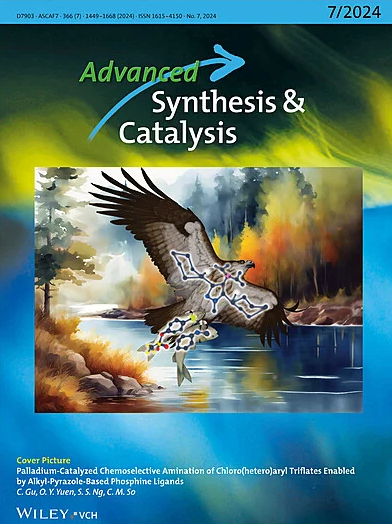Facet‐Engineered Cds with Cd Vacancies for High‐Efficiency Photocatalytic Oxidation of 5‐Hydroxymethylfurfural to 2,5‐Diformylfuran
IF 4
2区 化学
Q2 CHEMISTRY, APPLIED
引用次数: 0
Abstract
The photocatalytic oxidation of 5‐hydroxymethylfurfural (HMF) to 2,5‐diformylfuran (DFF) is a promising process with significant implications for sustainable energy and environmental applications. However, achieving highly selective DFF production from HMF remains a challenging task, particularly due to the dependency of molecular O2 activation on the composition and exposed facets of nanomaterials. This study investigates the impact of different preferential facets of hydrothermally synthesized cadmium sulfide (CdS) morphologies—including hollow spheres, nanorods, and flower‐like structures—on the photocatalytic oxidation of HMF to DFF. The findings reveal that the preferential CdS (002) facet and Cd vacancies in the hollow sphere morphology significantly enhance photocatalytic activity, achieving 68% HMF conversion and 89% selectivity for DFF production within 12 h of reaction time. This work highlights the critical role of material composition and facet orientation in optimizing photocatalytic processes for selective oxidation reactions, offering a potential strategy for the design of advanced photocatalysts in sustainable chemical production.

具有Cd空位的面形工程Cds用于5 -羟甲基糠醛高效光催化氧化为2,5 -二甲酰呋喃
5‐羟甲基糠醛(HMF)光催化氧化制2,5‐二甲酰呋喃(DFF)是一种有前景的工艺,在可持续能源和环境应用方面具有重要意义。然而,从HMF中获得高选择性DFF仍然是一项具有挑战性的任务,特别是由于分子O2活化依赖于纳米材料的组成和暴露的方面。本研究探讨了水热合成的硫化镉(cd)形态(包括空心球体、纳米棒和花状结构)的不同优先面对HMF光催化氧化成DFF的影响。结果表明,Cd(002)的优先面和空心球形态中的Cd空位显著提高了光催化活性,在12 h的反应时间内实现了68%的HMF转化率和89%的DFF选择性。这项工作强调了材料组成和面取向在优化选择性氧化反应光催化过程中的关键作用,为可持续化学生产中先进光催化剂的设计提供了潜在的策略。
本文章由计算机程序翻译,如有差异,请以英文原文为准。
求助全文
约1分钟内获得全文
求助全文
来源期刊

Advanced Synthesis & Catalysis
化学-应用化学
CiteScore
9.40
自引率
7.40%
发文量
447
审稿时长
1.8 months
期刊介绍:
Advanced Synthesis & Catalysis (ASC) is the leading primary journal in organic, organometallic, and applied chemistry.
The high impact of ASC can be attributed to the unique focus of the journal, which publishes exciting new results from academic and industrial labs on efficient, practical, and environmentally friendly organic synthesis. While homogeneous, heterogeneous, organic, and enzyme catalysis are key technologies to achieve green synthesis, significant contributions to the same goal by synthesis design, reaction techniques, flow chemistry, and continuous processing, multiphase catalysis, green solvents, catalyst immobilization, and recycling, separation science, and process development are also featured in ASC. The Aims and Scope can be found in the Notice to Authors or on the first page of the table of contents in every issue.
 求助内容:
求助内容: 应助结果提醒方式:
应助结果提醒方式:


